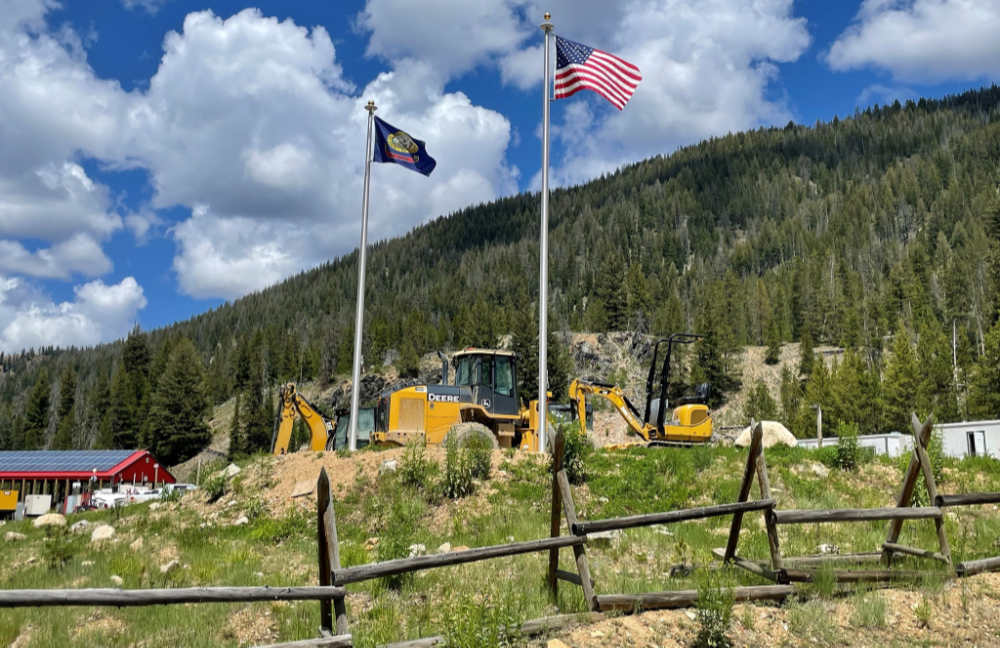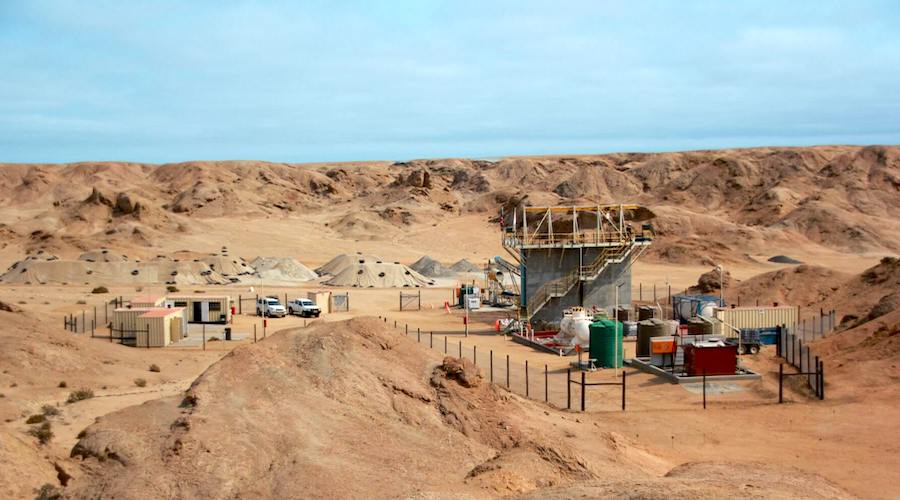Will mining disappear in the next decade?
A piece of recent media coverage suggested that with the global mining industry in decline over the last twenty years, this might signal the complete degeneration of the industry by 2024! WRS, a recruitment specialist for the industry sees some significant changes over the next decade but definitely not an end to an industry that turned truly global before most others and has been in evidence for hundreds of years.
As the world and its populations continue to develop there has obviously been a shift from many of the traditional coal mines, although they do still exist in Asia and South America, to an increased focus on using alternative forms of energy. And, of course, most of the new drilling businesses are focusing their efforts on fracking right now, as our need for energy is ensuring that lots of mining companies are adapting their business models and getting involved with this sometimes controversial industry. While that is a different take on mining, many in this emerging industry share the same skillset as those from more traditional mining disciplines.
The sheer size of population growth and the speed of development in China and other Asian countries, combined with ongoing requirements in the developed world has created unprecedented demand for minerals and metals. The demand comes mainly from millions of aspiring individuals in emerging economies striving for a better standard of living and, even with dramatic increases in recycling, an overall increase in newly mined materials is required to support the emergence of developing regions. In response to its need for minerals and metals, China has put security of supply high on its political agenda and is spending increasingly significant amounts on exploring for minerals inside China as well as reaching out to participate in the world’s mining and metals industry.
As the standard of living grows throughout the developing world, mineral and metal demand also expands. This pattern has been followed by all developing countries throughout history. Studies have now consistently demonstrated that when per capita income in a country reaches US$5,000–10,000 per year, metal demand increases particularly quickly.1
At the same time, the centres of mining activity have been steadily moving from developed to developing countries since the mid 20th century. Here are some key historical facts1:
- By the late 19th century, mining in Europe declined as the economic and political power passed to North America.
- The late 19th and early 20th centuries saw a dramatic increase in the US, to be followed after World War 2 by the same dramatic decline experienced previously in Europe.
Many of the most important mining countries in terms of mineral production today are indeed now emerging economies, often found south of the equator. Additionally, the largest mines are now to be found in developing countries. The one key exception to this is the Nordic countries where there has been mining of metals for centuries and nowadays this region dominates European mining.
Recently there have been huge investments in Latin America, Africa and parts of Asia and these are likely to intensify in the next ten years. Growth in exploration and mining interest in Africa, Latin America, and parts of Asia has been prompted by:
- The depletion of easily accessible mineral deposits in Europe and the US.
- Technological advances that have allowed mining of previously inaccessible deposits in remote less developed regions.
- The development of large ocean going vessels in the late 20th century facilitated trade of bulk mineral commodities such as iron ore, coal and bauxite.
The need for mining will definitely remain strong, but satisfying demand requires finding and developing new mines, even as resource use becomes more efficient and recycling systems develop. Fortunately the global geological supply of metals remains robust but these will increasingly be located in more remote regions, raising the need for technological advances to develop much more quickly. This factor, combined with the dramatic and continuing increase in demand for mined products, an increasingly competitive market, and a growing recognition of the long-term nature of many environmental and social issues, is seeing leading companies in the industry taking steps to speed up technological improvement.
One implication of the increasing sophistication of mining is the ongoing need for highly skilled employees. Because of the cyclical, long-term nature of mining, the industry must compete for highly skilled people at all times, even when markets slump. The challenge currently is to engage with new talent when worldwide, media coverage continues to focus on mining being in a massive decline, which means that new talent is not entering the industry as they don’t see it as a viable long term career option.
Within the industry there is significant mobility between projects and companies and expatriate employment is common, however the key factor to address is that many mining activities are culturally specific and much of the available young talent pool is being trained in one culture while the needs are often in another. This is impacted further by a growing requirement for individuals who are not only technically excellent but also have social skills that facilitate relationship building with host communities and countries.
So what is the future for mining?
- The trend of mine production moving to the emerging economies will continue. There are two major regions which have been less well explored than others: Africa and the Arctic (including Siberia, Alaska, northern Canada and Greenland). There are also opportunities for mineral extraction at the bottom of the world’s seas and mining permits have already been issued for this new area of mining, the first was given in Papua New Guinea for mining at a water depth of 1,500 metres.
- Even with higher demand for energy minerals and for technologies requiring new minerals and metals previously not in demand, most production capacity into the foreseeable future will be dedicated towards the same as those today: coal, iron ore, copper, bauxite, phosphate, potash, as well as smaller volumes of nickel, zinc and lead.
- Another change is that there will be increasing involvement in extractive activities by companies whose main focus is later in the value chain – smelters, refiners, manufacturers and even commodity traders. This trend was reported back in 2012 and showed in the number of steel companies seeking to enter mining to secure their supplies of iron ore and coking coal at reasonable cost.
- WRS have also recently explored the early development work in asteroid mining, although this is a much longer term project than the next decade perhaps.
Despite recent, worldwide, often negative media coverage, the global mining industry has managed to meet the challenges of variations in demand. For the future, the challenge of anticipating and meeting the increasing demand will continue as the industry evolves in step with an ever more sophisticated operating environment.
1 InBrief report Oct 2012
More News
Perpetua Resources gets final federal permit for Stibnite Gold project in Idaho
May 19, 2025 | 03:44 pm
{{ commodity.name }}
{{ post.title }}
{{ post.date }}



3 Comments
Gary
What’s yours in mined! Can anyone believe that the worlds insaitable demand for products can come from anywhere else?
Sergo Cusiani
Roman Empire disappeared when land owners lobbied laws to drive farmers into bankruptsy, thus concentrating the land in hands of a few politically orientated senators, who knew nothing about agriculture and did not even bother how the fields should be managed. If mining is destined to disappear, we should thank those idiots, who have big money and because of this they think they need no education.
LAMB
Mining will NEVER disappear – it may change, as in Europe where the land was taken for dwellings leaving no room for Mines(Sweden being an exception).
In North America, we have substantial areas to explore for Metals – but COAL is a different story – mining coal will disappear unless the Utilities using it for Power Generation find a way to eliminate POLLUTION, the main problem .
There will always be a demand for Copper, Zinc, Gold, Silver, Uranium and Iron Ore, the building blocks of Industry as we know it today. Changing those aspects would require an unforeseen Technological development to occur in a very short period of time. Mining of Asteroids and the Moon will take much longer to develop and would only be done for high-value metals that are no longer available on Earth.
Perhaps we might see a SILICON-based industry developed to replace some metals as it did in electronics, since there is an abundance of Silicon in the Earths crust, but on a grander scale to include buildings and space ships in the far future. Mans ingenuity to survive is surprising and not to be underestimated.